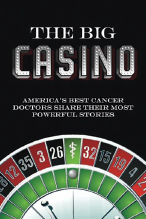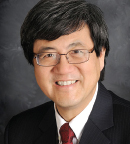
The following essay by Jeremy K. Hon, MD, is adapted from The Big Casino: America’s Best Cancer Doctors Share Their Most Powerful Stories, which was coedited by Stan Winokur, MD, and Vincent Coppola and published in May 2014. The book is available on Amazon.com and thebigcasino.org.
The following essay by Jeremy K. Hon, MD, is adapted from The Big Casino: America’s Best Cancer Doctors Share Their Most Powerful Stories, which was coedited by Stan Winokur, MD, and Vincent Coppola and published in May 2014. The book is available on Amazon.com and thebigcasino.org.
As physicians, we see people in some of their lowest moments. We experience their struggles, their triumphs, and their defeats vicariously. In many ways, their stories become our stories. When I was a doctor still in training, I met a young man whose story has stayed with me for many years and has been an inspiration to me throughout my practice of more than a quarter of a century.
But first, let me tell you about myself. I was born in Hong Kong to a refugee family fleeing the horrors of warfare in Mainland China. The Hong Kong I grew up in was very different from today’s prosperous country. As a child, I saw riots and conflicts in the streets between pro-Communist groups and the British colonial government. My family was poor, and on some days I felt uncertain as to whether we would have food on the table.
In January 1973, I came to the United States to study pharmacy at Samford University in Birmingham, Alabama. Coming to America was like stepping into a different world. I graduated from pharmacy school in 1975 on an accelerated academic schedule, and a year later I was matriculated into the University of Alabama School of Medicine. There, I met Lynda, a fellow student who later became my wife. We relocated to the University of Texas Health Science Center in Houston for postgraduate training. I was in internal medicine, and my wife was in diagnostic radiology.
I did my fellowship in hematology/medical oncology at the University of Texas Health Science Center in San Antonio, a vigorous program aimed at training physician-scientists. I was fortunate to work under many medical oncologists who were caring physicians with innovative skills and visions. However, no doctor had a stronger impact on my growth as a physician than a patient named David.
Getting Attached to the Patient
Like me, David was of Chinese descent. Although this may seem an irrelevant detail, it was important for me because when I looked at David, I saw many similarities in myself. His parents were working overseas with the U.S. State Department when he came into this world. David was very bright and personable; he was the president of his senior medical school class. He wanted to be an oncologist and had just finished an elective rotation at Memorial Sloan Kettering Cancer Center in New York City. David was a young man with his whole life ahead of him.
When I met him in the emergency room, based on my evaluation, David was diagnosed with acute myeloid leukemia (AML). This was in late 1983. At the time, durable remission in this disease was quite rare.

David was the first patient I identified with on a personal level. His struggle was my struggle. His pain was my pain. His sadness was my sadness. My experience with David has helped me with every patient since then, and for that I am very grateful.— Jeremy K. Hon, MD
Tweet this quote
The attending physician was James George, MD, a well-known and respected hematologist. I remember reviewing David’s peripheral smears and bone marrow specimens under a multihead microscope with Dr. George and also with David himself. Dr. George thought it appropriate for David to participate in parts of his own care. Early on in his course of illness, David decided to move his treatment to his beloved Memorial Sloan Kettering Cancer Center. Even though David moved on, I stayed in touch with him.
I called David in his hospital room almost daily. He was very weak and barely able to speak at times. The more I spoke with him, the sadder I felt. Several months into his treatment, I met David one more time in a hospital hallway. He looked very frail and pale; seeing him that way hurt me deeply. He told me how his disease was progressing. I was at a complete loss for words. Any comfort or hope I could offer would have sounded hollow in my own ears.
Empathizing With Patients
Looking back, I think I may have slipped into depression during that time. I spoke often with Dr. George about my conversations with David, and one day he told me, “Jeremy, you need to stop calling David.” Dr. George explained that there needed to be a professional distance between patients and their physicians. So I did what he suggested, and with time, my feelings of sadness faded.
About a year later, I saw David again, only this time it was in the pages of a magazine published by the University of Texas Health Science Center. David’s picture was prominently displayed on a full page. He was wearing a cap and gown, having just graduated from medical school. In fact, David delivered the graduation address for his medical school class of 1984. When I saw David’s picture, I was overcome with emotion and ended up reading the story through my tears. During his address, David told his classmates about his struggle with cancer and about how he first realized the seriousness of his illness when he saw the chemotherapy flowing into his veins.
The story affected me deeply. I’d studied extensively to understand cancers, offering treatments with the expectation of altering the natural history of malignancies and participating in clinical trials with the hope of developing better future therapies. But somehow, with David, I realized for the first time the profound seriousness that cancer represents not just to a person’s body, but to his whole being. David forced me to think of patients as human beings with networks of relationships and feelings. He made me realize that it’s not the physician who fights the battle—it is always the patient. No one can replace the patient in the actual struggle for survival. My encounter with David, with whom I identified so strongly, helped me to have empathy for all my patients. Empathy with my patients still remains one of my principles when I am planning a course of treatment.
Mirroring the Patient’s Experience
In his graduation address, David told his classmates how much being a patient had taught him about being a good physician. He explained that patients do not simply receive medical information from their physicians. They watch their doctors carefully, observing every mannerism, every facial expression, and every clue in their body language. He explained that every act of the physician is noted by the patient and later on may be interpreted as something the physician never consciously intended. I think about this insight very often when I speak with my patients.
David was the first patient I identified with on a personal level. His struggle was my struggle. His pain was my pain. His sadness was my sadness. This may have been because he looked like me. It may have been because we were both young doctors at the threshold of our careers. It may have been because of any number of reasons. But my experience with David has helped me with every patient since then, and for that I am very grateful.
David, I miss you, and I thank you. ■
Dr. Hon is a medical oncologist at the Clearview Cancer Institute in Huntsville, Alabama, where he is Director of the Stem Cell Transplant Program. He is a member of the American Society for Blood and Marrow Transplantation.

